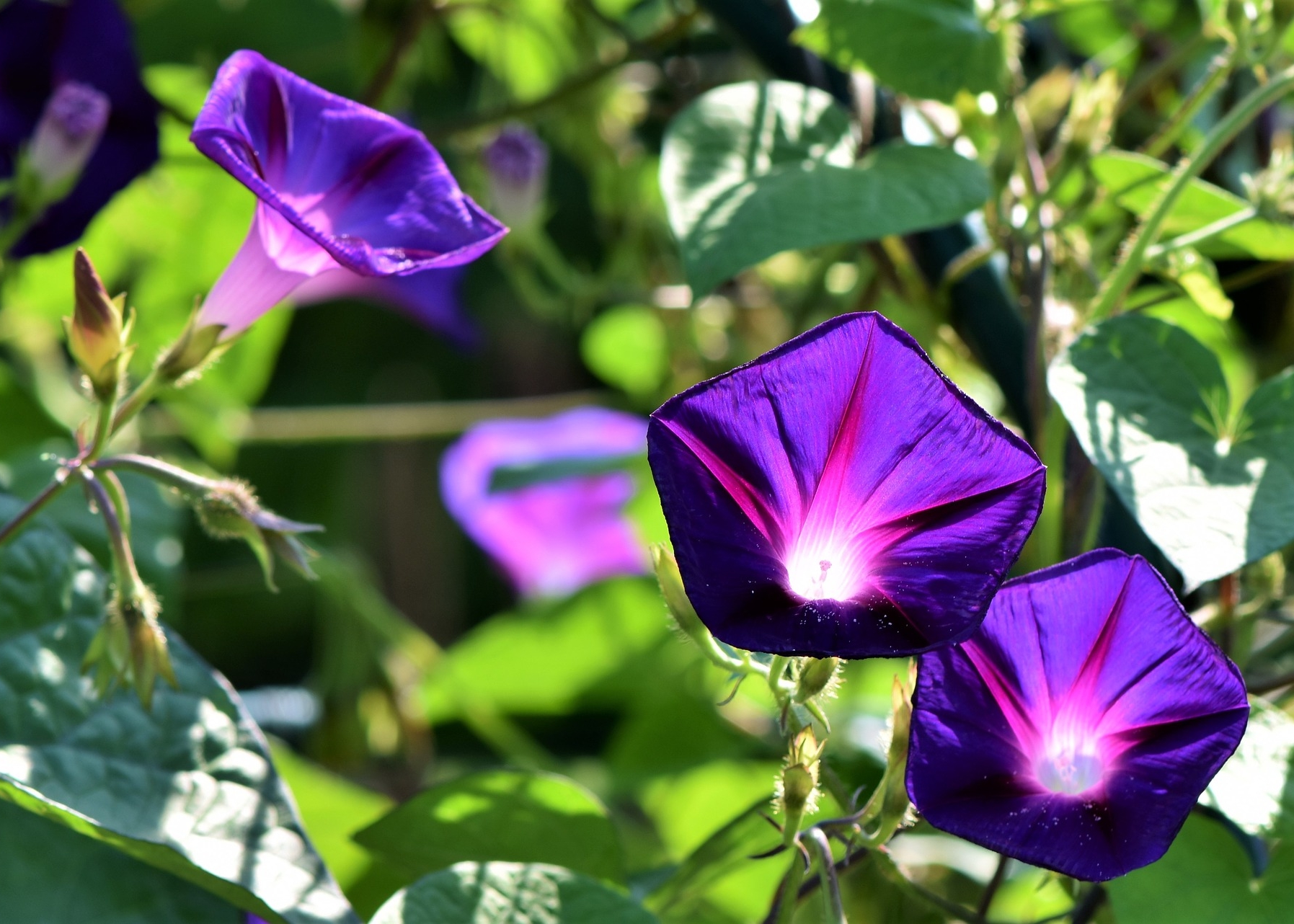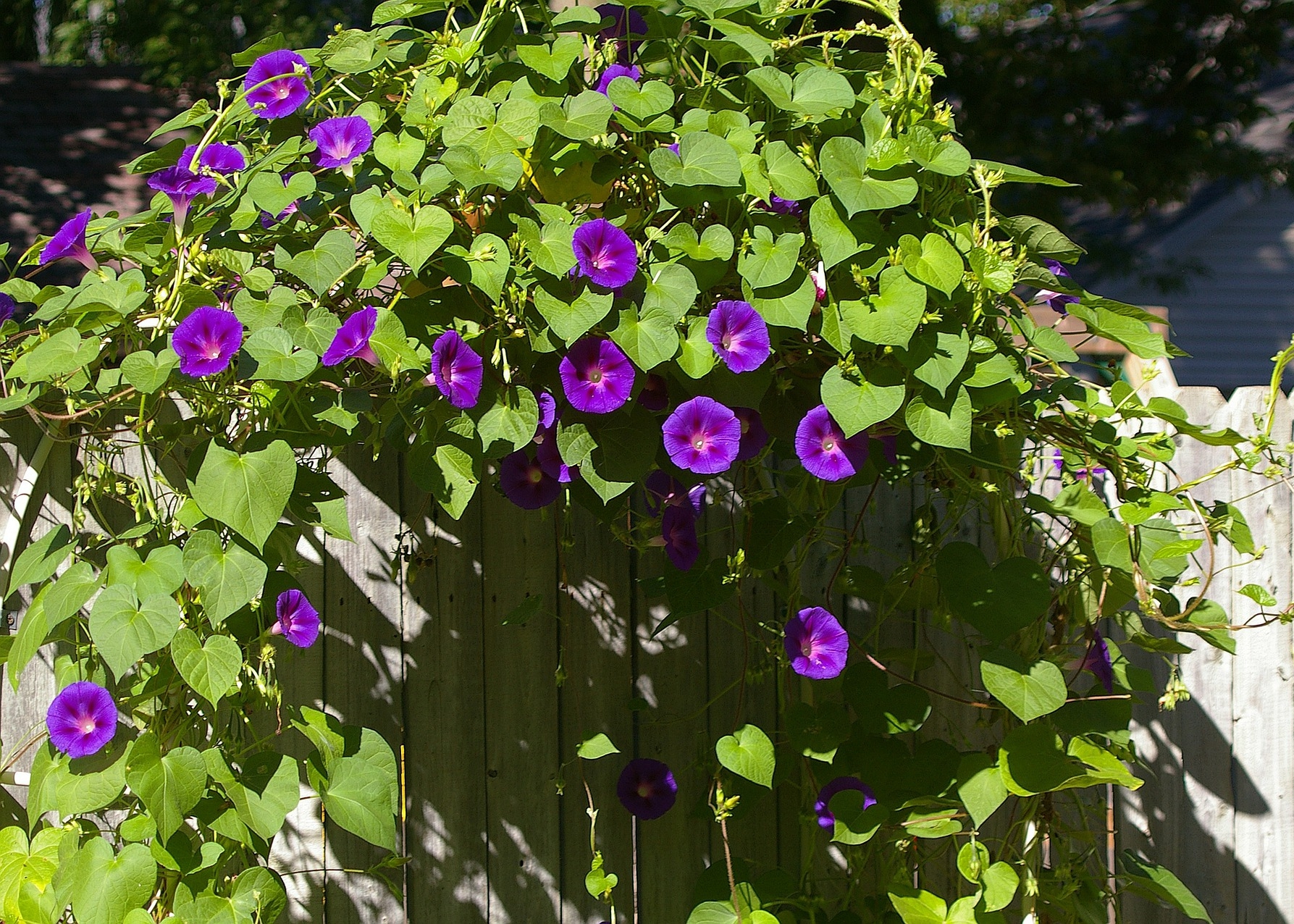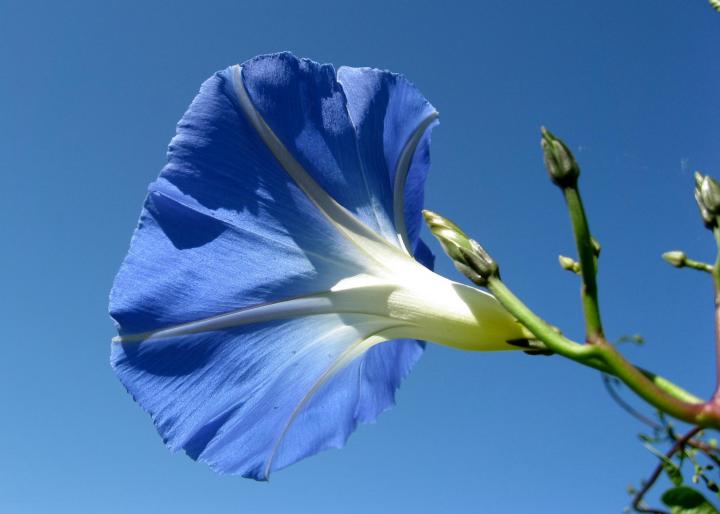
Sign up for our daily newsletter to get gardening tips and advice.
Planting, Growing, and Caring for Morning Glory Flowers
ADVERTISEMENT
Morning glories are my mothers favorite. I am planting under an arbor in a contained raised bed (hopefully to keep it in control). I have 2 questions I know you can help me with! Number One: at the end of the growing season, should I cut the vines back to the ground and remove the remaining vines from the arbor, or will they grow on last years vines and it’s better just to leave them on the arbor?
Number Two: Do deer eat morning glories?
Sorry to be so much trouble. I appreciate everything you do. Thanks, Teresa (Resa to my good friends)
My bindweed flowers blue.
I like it
Do I cut back the vines in the fall? Or just leave them as grown?
Hi, Vicky. You should remove the vines. Morning glories are tender annuals, so they are sensitive to cool temperatures and late frosts.
My morning glory vines are growing well, but have no buds or blossoms! Why might that be?
Morning glory foliage is immense but no flowers
Assuming the plant is getting appropriate sunlight, a lack of flowers commonly occurs when a morning glory is growing in soil that is too rich. High levels of nutrients (such as nitrogen) can cause the plant to grow more foliage and vines at the expense of flowers. On the bright side, if you keep planting morning glories in the same spot, they will keep using up the nutrients and, ironically, start to bloom better!
Beautiful green leaves. On east side of home . Nice and sunny. No blossoms or buds . Why
17 years ago, I made a humongous flower bed that is 250 feet long by 40 feet wide. It's filled with hundreds of beautiful perennials. I bought what was advertised as a morning glory. It looked so pretty the first year. It was the biggest gardening mistake I ever made. It has now spread and taken over the entire bed, strangling and choking out everything. It is the bane of my existence. I hate it so much. The vines are everywhere on my entire property. Its incredible how fast it grows and spreads. My advice is, do not buy it!













